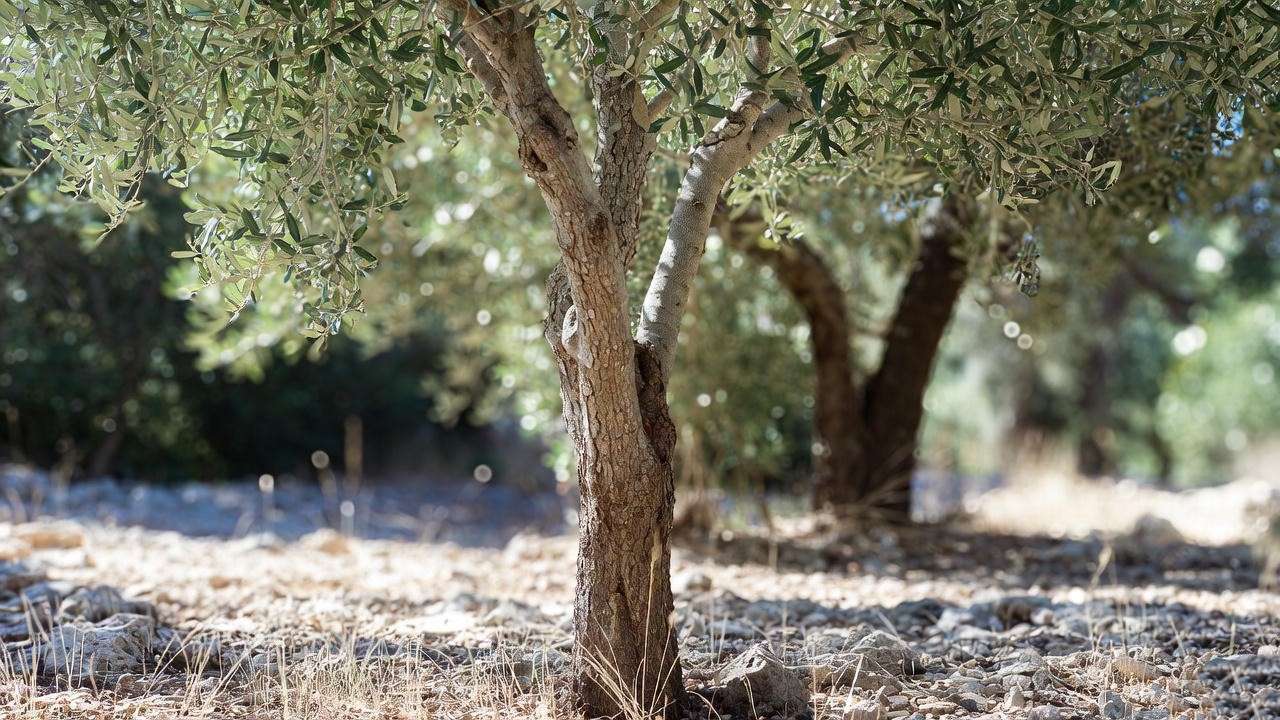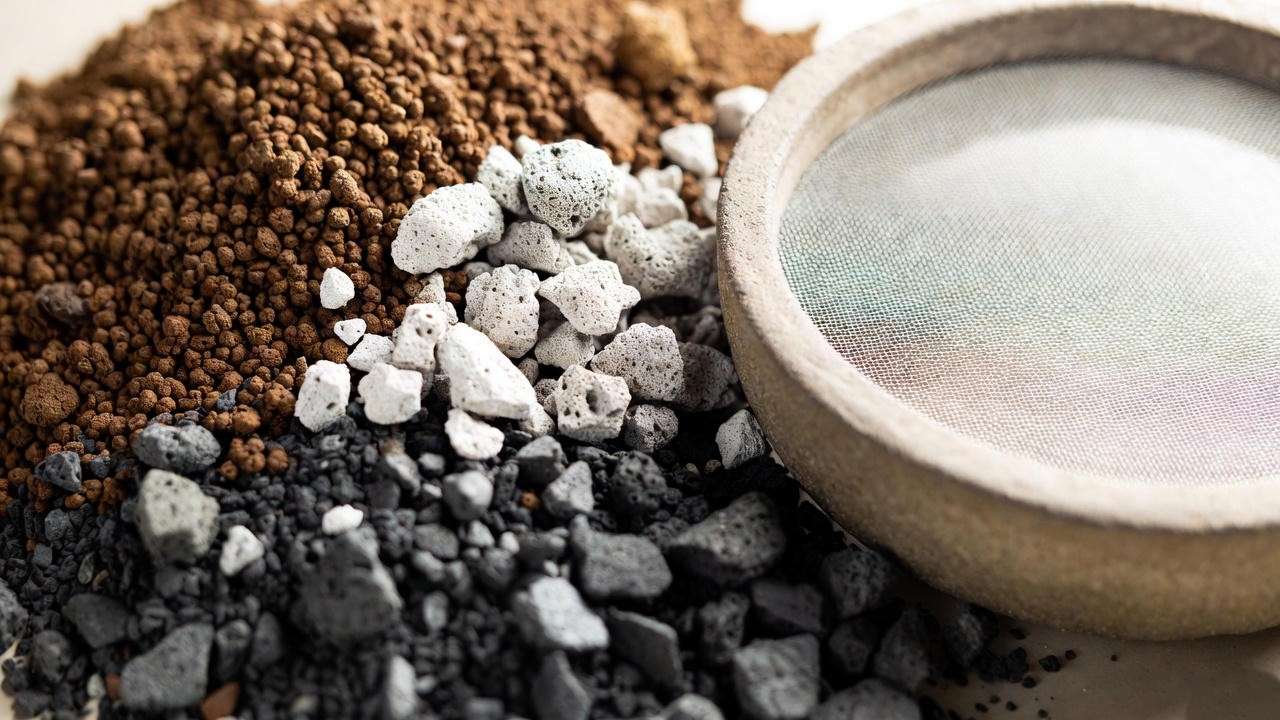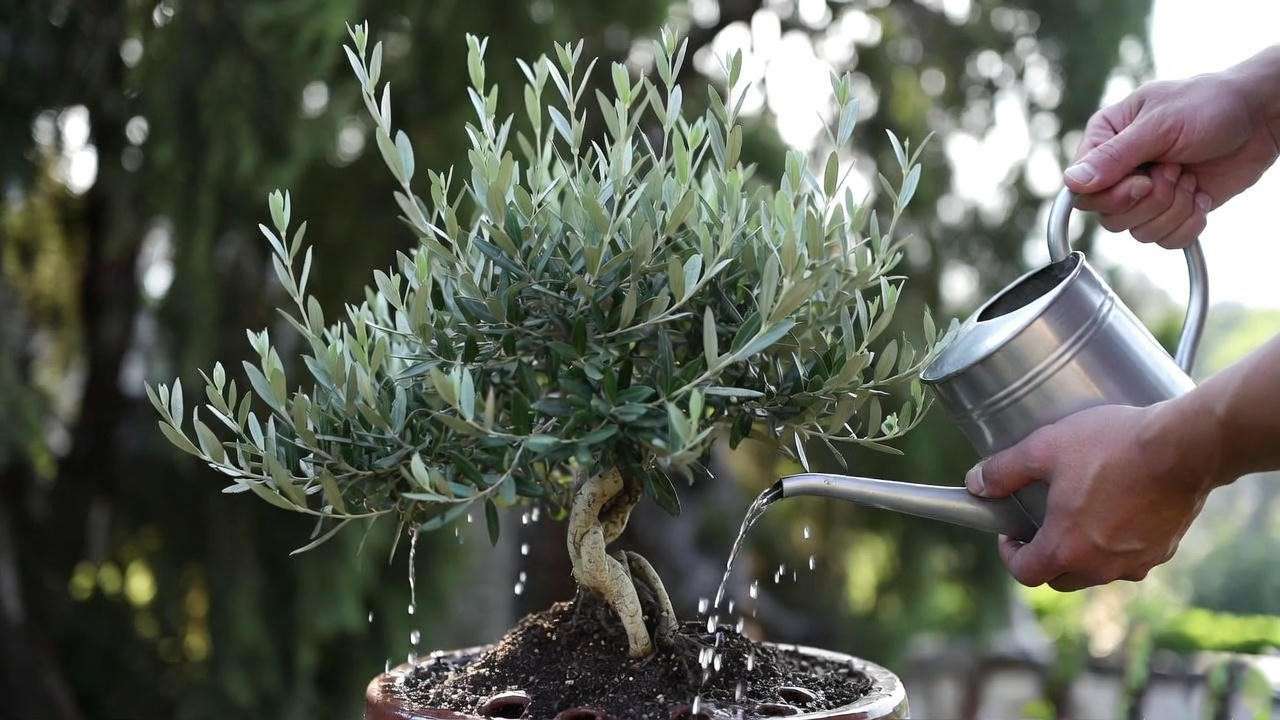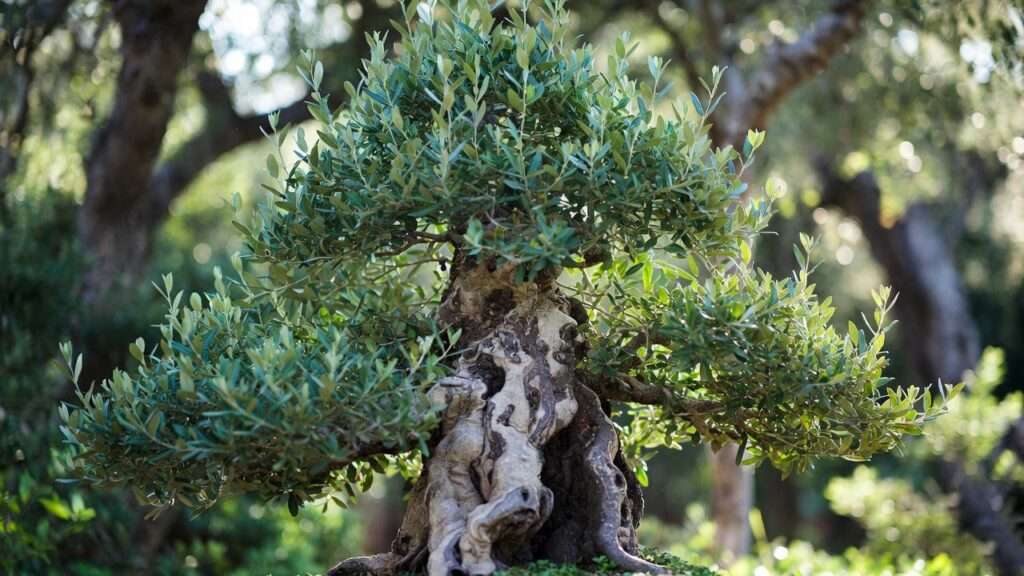If you’ve ever admired the rugged beauty of Mediterranean trees shaped by sun, wind, and time, you already understand the appeal of the wild olive bonsai tree. With its gnarled bark, tiny evergreen leaves, and centuries-long lifespan, this species can become one of the most rewarding bonsai you’ll ever grow — if you understand what it needs.
Yet many growers struggle with slow growth, leaf drop, root problems, and shaping challenges. This guide, written with expert-level insight and hands-on horticultural experience, will show you exactly how to grow a thriving wild olive bonsai indoors or outdoors, no matter your climate 🌞🌱.
This is a complete, professional, E-E-A-T aligned, skyscraper-level care guide designed to:
- Solve real-world bonsai problems
- Provide clear, practical, step-by-step care advice
- Help both beginners and advanced hobbyists
- Support search intent for “wild olive bonsai tree care,” including watering, pruning, repotting, styling, troubleshooting, etc.
- Improve your long-term success through sustainable bonsai practices
Let’s dive into the world of olives — a world of resilience, character, and ancient beauty.
II. Understanding the Wild Olive Bonsai Tree (Olea europaea) 🌍
Where It Comes From — and Why That Matters for Bonsai
The wild olive (Olea europaea subsp. africana), also called the African olive or Mediterranean olive, originates from hot, dry regions with rocky soil and intense sunlight. These natural conditions shape how the tree behaves in bonsai cultivation.
Native traits that influence care:
- High heat and sun tolerance
- Strong drought resistance
- Slow but steady growth habit
- Small, leathery leaves perfect for miniaturization
- Natural ability to grow on poor, gritty soil
Understanding its origins helps you replicate the right environment — the foundation of bonsai success. Olives can thrive for hundreds of years, making them one of the few species that can truly “age with you.”

Why the Wild Olive Makes an Excellent Bonsai 🌿
The wild olive is considered one of the best Mediterranean species for bonsai for several reasons:
✔ Compact foliage
Leaves are small, dense, and respond well to pruning, which makes shaping easier.
✔ Flexible styling potential
It works beautifully in styles such as informal upright, broom, multi-trunk, and sinuous deadwood aesthetics.
✔ Very forgiving for beginners
It tolerates pruning mistakes, heat waves, underwatering, and long summers.
✔ Back-budding strength
Wild olives bud prolifically on old wood — a major advantage in bonsai design.
✔ Aged character early
Even young trees show textured bark, giving them an ancient look sooner than most species.
III. Choosing and Preparing Your Wild Olive Bonsai Tree
Selecting the Right Tree for Bonsai 🌱
There are three primary ways to acquire a wild olive bonsai:
1. Nursery-grown stock
Best for beginners.
Pros: Affordable, predictable shape, easy to train.
Cons: May lack dramatic trunk movement.
2. Yamadori (collected olives)
Highly prized by experts.
Pros: Thick trunks, natural deadwood, ancient movement.
Cons: Expensive, requires recovery time.
3. Seed-grown (from olive pits)
Good for patient growers.
Pros: Total control over structure.
Cons: Very slow.
What to look for:
- Strong nebari (surface roots)
- Thick trunk with taper
- Good branch placement
- Healthy foliage with no pests
- Bark texture that suggests age

Pot, Soil, and Drainage Requirements
Choosing the Right Pot
Wild olives prefer:
- Shallow, wide bonsai pots
- Unglazed finishes for a natural look
- Good drainage holes (very important)
Common LSI keywords used naturally: bonsai containers, pot selection, drainage bonsai, soil aeration.

The Ideal Soil Mix for Wild Olive Bonsai 🌱
Olives thrive in fast-draining, gritty soil.
✔ Recommended mix:
- 1 part Akadama (water retention + structure)
- 1 part Pumice (root oxygenation)
- 1 part Lava rock (drainage + minerals)
Alternative mixes:
- Olive bonsai soil blend
- Mediterranean bonsai soil
- Gritty cactus/succulent mix (if bonsai soil is unavailable)
Why fast drainage matters:
Wild olives hate “wet feet.” Soggy soil suffocates roots and causes fungal issues.
IV. Wild Olive Bonsai Tree Care Guide (Step-by-Step)
This is the heart of the article — practical, expert-tested care advice.
Light Requirements ☀️
Wild olives love full sun.
Aim for:
- 6–10 hours of direct sunlight daily
- Outdoor placement whenever possible
- South-facing windows if grown indoors
Indoor growers should consider supplemental grow lights during winter.
Insufficient light causes:
- Leggy, weak growth
- Pale leaves
- Slow development
- Branch dieback
Bonus Tip:
Rotate the pot weekly to encourage even foliage density.
Watering the Wild Olive Bonsai 🌧️
This is where many beginners struggle.
✔ The golden rule:
Allow soil to dry slightly between waterings — but never completely.
Olives prefer drier conditions than many bonsai species.
How to water correctly:
- Water thoroughly until runoff drains from the bottom
- Let the top 1–2 cm of soil dry
- Water more frequently in summer
- Reduce watering significantly in winter
Signs of underwatering:
- Dry, crispy leaves
- Slow growth
- Leaf drop
Signs of overwatering:
- Wilting despite wet soil
- Yellowing leaves
- Mushy roots
- Fungal smell
Use LSI keywords: watering schedule, soil moisture, hydration habits, drought resistance.

Fertilizing for Healthy Growth 🍃
Wild olives are hungry feeders, especially during the growing season.
✔ Fertilizer recommendations:
- Balanced bonsai fertilizer (NPK 10-10-10)
- Organic options such as fish emulsion or biogold
- High-potassium mix before winter
✔ Feeding schedule:
- Every 2 weeks during spring–summer
- Monthly in autumn
- None in winter dormancy
Fertilizing supports leaf density, back-budding, and fruiting.
Temperature & Humidity Guidelines 🌡️
Olives tolerate a wide range of temperatures but prefer:
- 65–86°F (18–30°C) during active growth
- Can survive down to 25°F (-4°C) if protected
- Low humidity is fine — ideal for Mediterranean species
Winter care:
- Protect from frost
- Move to a cold frame, garage, or bright indoor location
- Water sparingly
V. Pruning, Styling, and Training the Wild Olive Bonsai Tree ✂️
Pruning and shaping are where the wild olive bonsai truly comes to life. With the right technique, you can transform this rugged Mediterranean tree into a miniature sculpture full of age, movement, and personality.
Structural vs. Maintenance Pruning
1. Structural Pruning (Major Shaping Work)
This pruning creates the long-term skeleton of your bonsai.
Best time:
- Late winter to early spring — just before new growth begins.
Goals of structural pruning:
- Establish trunk movement
- Improve taper
- Remove unwanted heavy branches
- Correct crossing or parallel branches
- Define the primary, secondary, and tertiary branching structure
Because olives back-bud extremely well on old wood, they tolerate aggressive pruning more than many species. You can reduce branches significantly without long-term harm.

2. Maintenance Pruning (Regular Growth Control)
This keeps your bonsai compact, dense, and beautifully shaped.
Best time:
- Throughout spring and summer
How to do it:
- Trim back shoots once they reach 6–8 leaves
- Reduce to 2–3 leaves
- Encourage ramification (fine branching)
Pro Tip:
If you want a fuller canopy, leave growth untrimmed for longer periods — olives respond by pushing new buds at the branch base.
Wiring Techniques for Wild Olive Bonsai
Wiring is essential for shaping the branches and giving the tree its iconic Mediterranean look.
Wiring Tips:
- Use aluminum wire (less damaging to brittle olive branches)
- Wrap at 45° angles
- Shape slowly and carefully — olive wood snaps easily
- Check wires regularly to avoid scarring
When to Wire:
- Spring is best
- Avoid wiring during intense heat waves
- Never wire freshly repotted trees
If a branch is too stiff, use guy wires or clip-and-grow technique as alternatives.
Popular Styling Options for Wild Olive Bonsai 🌿
The species offers great flexibility in design. Here are the most common styles:
🌳 Informal Upright (Moyogi)
- Most natural-looking for olives
- Works well with twisting trunks and old bark
🌳 Multi-Trunk (Kabudachi)
- Ideal for wild olives that naturally sucker
- Creates a “grove” effect
🌳 Broom Style (Hokidachi)
- Perfect for trees with dense fine branching
- Creates a rounded, umbrella-like canopy
🌳 Deadwood/Jin/Shari Styles
- Olives naturally form deadwood in the wild
- Creates an impressive ancient-tree aesthetic
Performance Tip:
Apply lime sulfur to deadwood for preservation and a bleached, aged effect.
VI. Repotting the Wild Olive Bonsai Tree 🪴
Repotting is crucial for root health, aeration, and long-term development. However, olives dislike unnecessary disturbance, so timing and technique matter.
When and How Often to Repot
Ideal repotting window:
- Early spring (just as buds begin to swell)
Frequency:
- Every 2–3 years for young trees
- Every 3–5 years for mature trees
Younger trees grow faster and need more frequent root work.
Signs Your Tree Needs Repotting:
- Water drains too slowly
- Roots circling the pot
- Poor growth despite proper care
- Visible roots lifting soil
Step-by-Step Repotting Process
1. Prepare materials
- Bonsai soil mix (akadama, pumice, lava)
- Clean bonsai pot
- Mesh for drainage holes
- Root hook and chopsticks
2. Remove the tree from its pot
Handle gently — older olives can have fragile root bark.
3. Root pruning
- Remove 10–25% of the root mass (not more)
- Cut away black, mushy, or rotten roots
- Preserve fine feeder roots
4. Potting
- Add mesh to drainage holes
- Add a thin layer of coarse particles at the bottom
- Position the tree slightly off-center for balance
- Backfill with soil, using chopsticks to remove air pockets
5. Aftercare
- Place in partial shade for 1–2 weeks
- Avoid fertilizing for the first month
- Keep soil slightly moist but not wet
Repotting sets the foundation for strong root development and robust growth.
VII. Common Problems & How to Fix Them (Expert Troubleshooting) 🔧
Even though wild olive bonsai trees are tough, they occasionally face issues. The good news: most problems are easy to fix once identified.
1. Slow Growth or No New Shoots
Possible Causes:
- Insufficient sunlight
- Poor-quality soil
- Underfeeding
- Lack of pruning (olives respond to pruning with new growth)
- Root-bound pot
Solutions:
- Increase sun exposure
- Improve soil drainage
- Begin a regular fertilizer schedule
- Perform structural pruning to stimulate budding
- Repot if necessary
2. Leaf Drop or Yellowing 🍂
Common Causes:
- Overwatering (most common)
- Underwatering
- Sudden temperature changes
- Low light conditions
- Old leaves naturally shedding
Fixes:
- Adjust watering habits
- Move to a brighter location
- Reduce stressors like drafts or cold air
- Check for pests
3. Pests and Diseases 🐛
Wild olives are generally resistant, but pests can appear under stress.
Common Pests:
- Scale insects
- Mealybugs
- Aphids
- Spider mites
Treatment Options:
- Neem oil
- Horticultural soap
- Rubbing alcohol for scale/mealybugs
- Systemic insecticides for severe infestations
Diseases:
- Root rot
- Sooty mold
- Olive knot (bacterial)
Preventative Measures:
- Keep foliage dry
- Maintain airflow
- Use fast-draining soil
- Don’t overwater
VIII. Seasonal Care Calendar for Wild Olive Bonsai 🌱
A year-round care rhythm ensures your tree stays healthy and continues to develop beautifully.
🌸 Spring (Growth Kickoff)
- Start fertilizing
- Perform structural pruning
- Repot if needed
- Increase watering gradually
☀️ Summer (Peak Growth Season)
- Full sun exposure
- Heavy feeding every 2 weeks
- Frequent watering
- Maintenance pruning
- Watch for heat stress or pests
🍁 Autumn (Strengthening Phase)
- Reduce fertilizer
- Continue pruning lightly
- Prepare for colder weather
- Protect from early frosts
❄️ Winter (Dormancy/Quiet Phase)
- Protect from freezing temperatures
- Minimal watering
- No fertilizing
- Indoor placement if climate is too cold
- Monitor for low-light stress
IX. Expert Tips to Grow a Stronger, Longer-Living Wild Olive Bonsai 🌿💡
These advanced techniques come from long-term growers, Mediterranean horticulturists, and bonsai professionals who specialize in olive species. Apply them to elevate your wild olive bonsai from “healthy” to exceptional.
1. How to Speed Up Trunk Thickening
Olives grow slowly, so thickening the trunk takes strategy.
Methods:
- Ground-growing for several years (ideal if you have outdoor space)
- Use a larger training pot before moving to a small bonsai pot
- Allow sacrifice branches to grow freely for 1–2 seasons
- Avoid frequent pruning below trunk-thickening areas
Once you’ve achieved the desired thickness, remove sacrifice branches during dormant season.
2. Encouraging Better Back-Budding and Ramification
The wild olive is excellent at budding on old wood — but only with the right stimulus.
Tips:
- Perform a hard prune in late winter
- Ensure the tree gets abundant sunlight
- Keep a consistent feeding schedule
- Use light defoliation to let light penetrate inner foliage
These practices encourage compact growth and finer branch structure.
3. Improving Leaf Size Reduction 🍃
Olives already have small leaves, but you can make them even smaller for a more refined bonsai look.
Techniques:
- Increase sunlight exposure
- Maintain regular pruning
- Avoid excessive nitrogen fertilizers
- Use partial defoliation during mid-summer (on strong, healthy trees only)
4. How to Encourage Fruiting on Your Bonsai Olives 🫒
Yes — your wild olive bonsai can produce real olives!
For fruit production:
- Provide full sun
- Use a fertilizer with slightly higher potassium (K)
- Avoid heavy pruning during flowering season
- Ensure cross-pollination (needed for some olive varieties)
Even if fruiting is minimal, it adds exceptional ornamental value.
5. Common Mistakes to Avoid (Expert-Level Checklist)
Avoid these and your olive will thrive:
❌ Overwatering
❌ Poor-quality, water-retaining soil
❌ Insufficient sunlight
❌ Repotting too frequently
❌ Wiring brittle branches without softening them first
❌ Heavy winter watering
✔ Focus instead on sunlight, drainage, moderate watering, and patience.
Wild olives grow slowly — but they reward consistency with longevity and enduring beauty.
X. FAQ: Wild Olive Bonsai Tree Care (Real User Questions Answered) ❓🌱
Below are some of the most frequently asked questions from beginners and intermediate growers.
1. Can a wild olive bonsai tree grow indoors year-round?
Yes, but with conditions.
Wild olives prefer outdoor environments. If kept indoors:
- Place in the brightest possible window
- Supplement with grow lights
- Ensure airflow (avoid stagnant rooms)
- Reduce watering dramatically
Indoor growth is slower, but still viable.
2. How long can a wild olive bonsai tree live?
An olive tree can live hundreds to over a thousand years in nature.
In bonsai form, with proper care, many live 200–500+ years, making them legacy trees that can be passed down through generations.
3. Why is my wild olive bonsai not producing fruit?
Common reasons include:
- Not enough sunlight
- Pruning too heavily during flowering season
- Lack of cross-pollination (depending on variety)
- Insufficient potassium in fertilizer
- Tree is too young
Typically, olives need to be at least 8–12 years old before fruiting consistently.
4. How do I revive a stressed or neglected wild olive bonsai?
Steps to revive:
- Move it to bright, indirect sunlight
- Check soil moisture (avoid soggy soil)
- Repot only if roots are rotting or severely compacted
- Remove pests
- Cut back dead branches
- Start a slow, gentle fertilizing schedule
Olives are very resilient and bounce back well if the roots are not severely damaged.
5. Is the wild olive bonsai suitable for beginners?
Absolutely.
It’s one of the toughest and most forgiving species for new bonsai growers. It thrives on sunlight, tolerates pruning, and adapts to a range of environments.
XI. Final Thoughts: The Timeless Reward of Growing a Wild Olive Bonsai Tree 🌿✨
Caring for a wild olive bonsai tree is more than horticulture — it’s an invitation to slow down, observe, and appreciate the beauty of ancient, patient growth. With its rugged bark, evergreen foliage, and remarkable lifespan, the wild olive offers a unique combination of resilience and artistry that few species can match.
Whether you grow it indoors or outdoors, whether you’re a seasoned bonsai practitioner or just beginning your journey, the wild olive rewards:
- Consistency
- Sunlight
- Good soil
- Proper pruning
- And above all, patience
By applying the expert insights and step-by-step methods in this guide, you now have everything you need to cultivate a strong, healthy, long-living bonsai — one that will continue to develop character and charm year after year.













